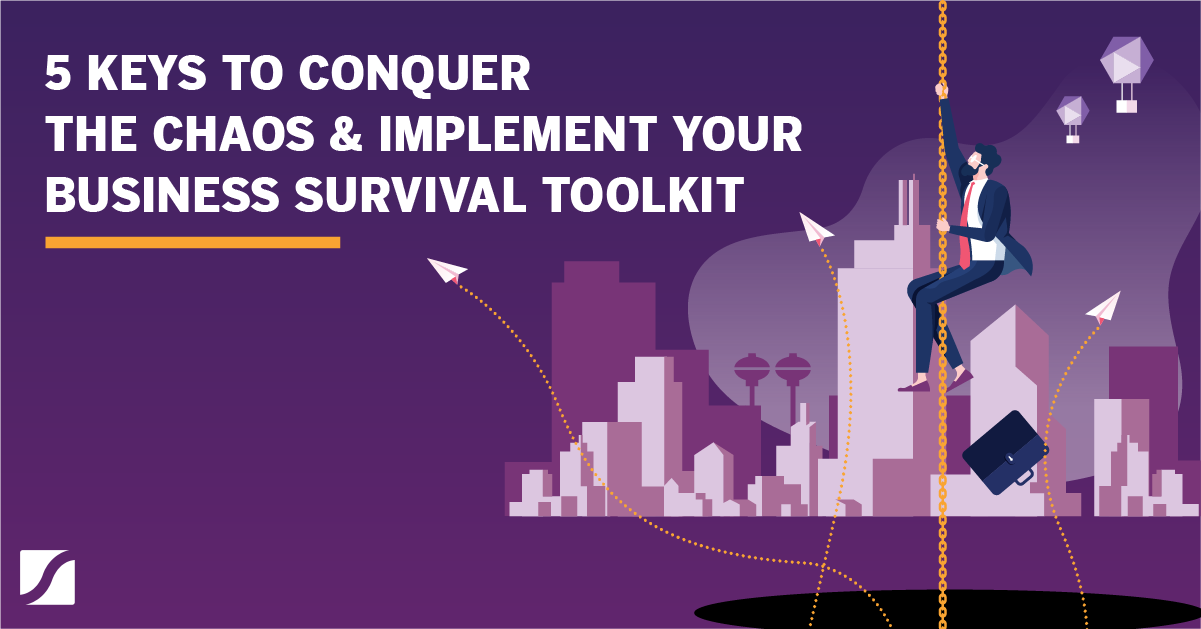5 Key Steps to Build Executive-Level Trust and Credibility In Complex Sales

To sell a high-value product or solution, you have to meet with the person responsible for making high-level decisions.
That makes engaging with C-level prospects essential. But, you can’t just show up with a generic sales pitch. Initiating and building relationships with executives requires some homework.
Before even initiating contact, ask yourself--and answer--these critical questions:
- How can I establish unique value that will be relevant to THIS executive’s most pressing issues?
- How can I create quantified value, alignment, and confidence among their executive team?
- How can I ensure that the value they are expecting will be the value I can deliver?
Bottom line: Unprepared sales professionals will lose the sale if they neglect the following five key steps to building trust and credibility.
Step 1: Foster an “Executive Team” Mindset
Your C-level prospects can be intimidating to approach. They may refuse to meet with you if they don’t view you as a knowledgeable advisor who brings measurable value.
However, executives will want to see you if you can help them accomplish their agenda.
So, figure out how your product or solution can support that agenda. Show them that you’re a team player by leading a high-level project that will benefit them. Can’t think of one? How about diagnosing the current problem or situation that’s hindering their agenda, and offering a valuable solution: Yours!
Step 2: Establish Relevance
As sales professionals, we set ourselves up for success when we frame the conversation in a way that is directly in line with our customer’s priorities.
Executives’ priorities center on three core business drivers:
- Financial drivers involve increasing revenue and decreasing expenses.
- Quality drivers focus on customer satisfaction, employee satisfaction, and regulatory compliance.
- Competitive drivers center on creating unique products or services that can be delivered in a timely manner.
Do your homework: First, try to get a better understanding of the executive’s priorities.
You can do this by identifying the objectives in the company’s business plan that your solution can impact.
Study the company’s strategy and objectives. You can find these in quarterly statements, annual reports, and stockholder meeting minutes. Put in the time to develop a 360°-view of the executive’s agenda and be able to speak their language.
Your goal is to position your solution as one that helps the prospect achieve their priorities. You also want to position yourself as a credible guide for how they can adopt that solution.
This elevates you from salesperson to trusted advisor.
Step 3: Create the Incentive to Change
As you learn more about your prospect, create a “value hypothesis”—the quantifiable value that your solution will provide. Remember that it’s a hypothesis, not yet a statement of fact. Discussing a value hypothesis invites the customer to join you in a collaborative process to determine its validity.
The value hypothesis accomplishes four key elements:
- Clarifies business objectives
- Identifies physical symptoms and indicators, showing that they need your solution
- Calculates the potential amount at risk due to the absence of your solution
- Shows the prospect this potential risk
In a best-case scenario, the executive will believe your value hypothesis. If they do, you’ll earn privileged access to the organization’s key people who can help you prove or disprove the hypothesis.
The next step is testing your hypothesis. Do this by connecting the customer’s symptoms, causes, and consequences that are due to the absence of your solution. Conduct diagnostic conversations with the right “cast of characters.” These include those most affected by the situation, those with access to the information you need, and those who can verify the issue and measure your solution’s impact.
If your conclusions hold true, the executive will recognize that your hypothesis is accurate, internally proven, and significant enough to act upon. They now have the “incentive to change” their current situation.
Step 4: Provide the Confidence to Invest
Now, in your role of respected advisor, not salesperson, you must lead the prospect’s team in a collaborative design process and get them to buy-in to your solution. Be sure to discuss expectations about outcomes and results, alternatives to consider, financial returns, investment expectations, timing, and decision criteria. When done well, the cast of characters will see the benefit of what they are about to do, how they will do it, and how it will work.
Once the team agrees to your solution, it’s time to share your progress with the executive. When you quantify your solution’s impact and show the true cost of their current situation, they’ll see that your value-driven solution is a smart business decision. The executive and their team now have the “confidence to invest.”
Step 5: Achieve Measurable Results
In the final stage of the sale, you need to make sure that value is achieved during your solution’s implementation. You also need to guide your customer on how that value will be measured and reported. You’ll need to track and report results, solicit feedback from those involved, and identify opportunities and challenges the company may encounter.
It’s also important to maintain a healthy working relationship by conducting business review meetings with the executive. Use these to manage expectations, answer questions about your solution, and communicate the specific value as it is being delivered. These meetings can also help identify new opportunities for your company’s products and, , most importantly, secure a long-term relationship built on trust.
In today’s complex and highly competitive sales marketplace, engaging with executive-level prospects is essential. Generic strategies or sales scripts that worked in lower-level sales won’t earn results with executives. Instead, it is mandatory that you diagnose the executive’s unique situation, collaborate with those who will be impacted by your solution, and ensure top value is achieved during delivery and implementation.
Step out from the traditional approaches to selling that don’t have a place in the modern marketplace. When you establish relevance, credibility, and trust with executives, you will win more business and fuel profitability for both your organization and the customers you serve.




